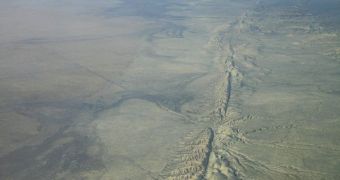The commonly accepted model of our planet states that the thick core is surrounded by a massive layer of magma known as the mantle, on which the tectonic plates that make up the crust float. When these plates meet, in areas known as fault lines, they collide against each other. When these collisions are delayed, tension begins to build up. Eventually, when the right trigger appears, that tension is released as an earthquake, and the plates fall into place. A new study shows that the shock waves thus generated can directly influence fault lines on the other side of the planet, Nature News reports.
The find is very important, as it holds the key to explaining why certain renowned fault lines, which exist in highly urbanized areas, may change their properties from one day to the next, and become active in periods when they should theoretically be dormant. Tectonic plates usually stop moving when they begin to grind to each other and become stuck. Seeing how they are pushed by other plates coming after them, they tend to eliminate all the obstacles that prevent them from gliding on top of each other. When the obstacle snaps, the ensuing shock waves travel through the ground at high speeds.
The new study was conducted on seismic data on the famous San Andreas Fault, on the West Coast of the United States, collected over the past 22 years. The research focused on a small region around the city of Parkfield, located in central California. Scientists noticed that the frequency of earthquakes increased substantially in 2005, and concluded that this upsurge must have been caused by the Sumatra–Andaman tremor that took place in late 2004. This is the same earthquake that caused the devastating Indian-Ocean tsunami that devastated southern Asia.
In another example, a 7.9-magnitude tremor that struck Alaska in 2002, made its effects felt as far southwards as Wyoming and California. Still, this case is different, because the original earthquake was relatively close to the fault lines, and caused a release in their tension directly. Conversely, in the case of the 2005 upsurge, it took several months before the frequency increase was registered. According to University of California in Berkeley (UCB) seismologist Taka'aki Taira, the first author of the new study, the Pacific-Ocean earthquake may have indirectly weakened the San Andreas fault line. “Weakening the fault means the fault can store less stress before [it] fails,” the expert says.

 14 DAY TRIAL //
14 DAY TRIAL //